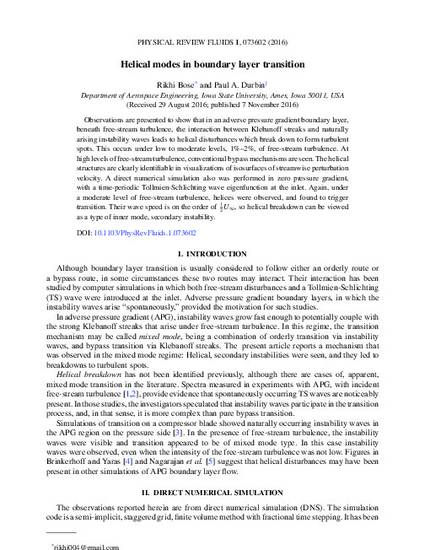
Observations are presented to show that in an adverse pressure gradient boundary layer, beneath free-stream turbulence, the interaction between Klebanoff streaks and naturally arising instability waves leads to helical disturbances which break down to form turbulent spots. This occurs under low to moderate levels, 1%–2%, of free-stream turbulence. At high levels of free-stream turbulence, conventional bypass mechanisms are seen. The helical structures are clearly identifiable in visualizations of isosurfaces of streamwise perturbation velocity. A direct numerical simulation also was performed in zero pressure gradient, with a time-periodic Tollmien-Schlichting wave eigenfunction at the inlet. Again, under a moderate level of free-stream turbulence, helices were observed, and found to trigger transition. Their wave speed is on the order of 12U∞, so helical breakdown can be viewed as a type of inner mode, secondary instability.
Available at: http://works.bepress.com/paul_durbin/18/

This article is published as Bose, Rikhi, and Paul A. Durbin. "Helical modes in boundary layer transition." Physical Review Fluids 1, no. 7 (2016): 073602. 10.1103/PhysRevFluids.1.073602. Posted with permission.